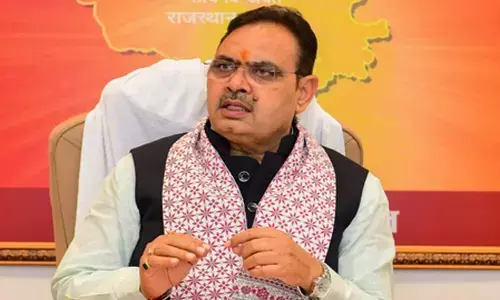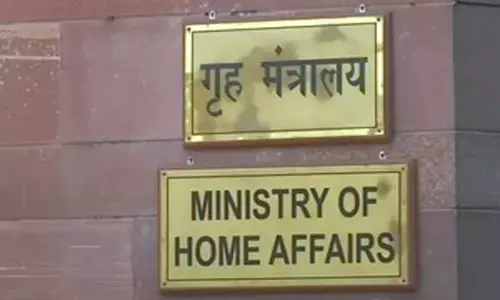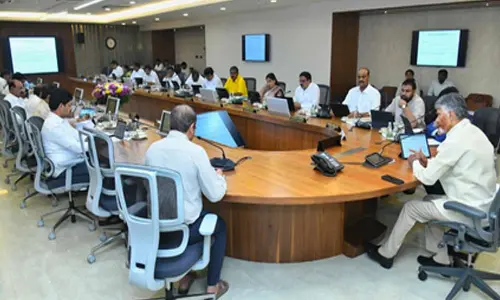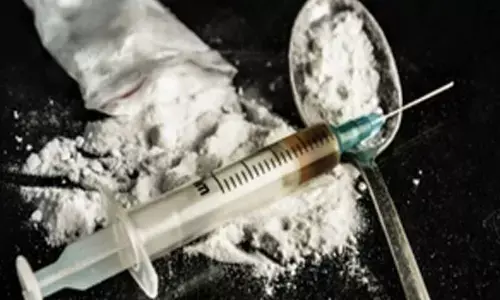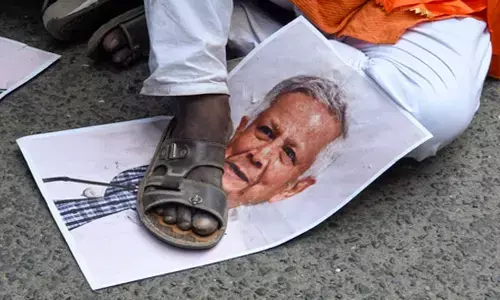Is your little girl safe in school

Is Your Little Girl Safe in School. Despite the fact that the National Crime Records Bureau (NCRB) data has shown a rise of 45 per cent in cases of alleged child rape – 12,363 cases were reported in 2013 as compared to 8,541 in 2012 – many families either remain ignorant or are resigned to the threats their children are exposed to, especially in school.
The rape of a six-year-old girl at an upscale school in Bengaluru has refocused everyone’s attention on the issue of child sexual abuse in the country. Ever since this chilling news has hit the headlines, parents across India have been forced to face the reality that their child too could be at risk
Despite the fact that the National Crime Records Bureau (NCRB) data has shown a rise of 45 per cent in cases of alleged child rape – 12,363 cases were reported in 2013 as compared to 8,541 in 2012 – many families either remain ignorant or are resigned to the threats their children are exposed to, especially in school. “It is indeed incredible to see that no one really raises their voice when a school blatantly issues letters stating it is not responsible for the safety of children studying there. This is illegal,” states Chennai-based legal expert TK Ramkumar. He further adds, “The law dictates that children under the age of consent have to be protected by the institution they are enrolled into.”
However, as things stand presently most schools have neither put in place any concrete systems to guarantee safety within their premises nor have they created a culture that builds awareness among children. Despite this, the good news is that it is not a scenario that cannot change.
For starters, what is required is the strict execution of the law. Fact is that though the Protection of Children from Sexual Offences (POCSO) Act, 2012, covers all forms of child sexual abuse and establishes important guidelines for the police and courts to deal with victims sensitively, its implementation is ineffective as neither the authorities nor parents are really in the know of its various provisions. In 2013, Central Board of School Education (CBSE) had issued a circular directing schools to publicise the POCSO Act among teachers and parents. Many remain clueless till date. Apart from this, schools have been mandated to prominently display the child helpline number, 1098, on campus but to no avail.
State-run institutions need to improve as well. In Tamil Nadu, for instance, the Department of School Education has issued a handbook clearly laying down the protocol of action in case there is a complaint of sexual assault. Again, while this has been distributed among government school staffers, private schools haven’t followed suit.
“Educational institutions have to create and seriously enforce proper rules of conduct for teachers, non-teaching staff and even older children stating what is acceptable and unacceptable behaviour,” asserts Dr Shaibya Saldanha of Enfold Trust, a Bengaluru-based orgamisation that works on imparting life skills and sexuality education to children. She adds, “In the horrific case in Bengaluru, reports have revealed that the victim had been put in isolation in a separate room as punishment, which gave the molester an opportunity to violate her. Had the teachers been aware that keeping a child in isolation as punishment is illegal they would not have done it and maybe the girl would have been saved of the trauma she has lived through.” Dr Saldanha is not wrong. As per the Juvenile Justice Act (Section 23) as well as the Indian Penal Code (Section 319) solitary confinement of children is illegal.
What this necessarily points to is the total lack of awareness when it comes to the issue of child protection. Indeed, this gap in information can be tackled through suitable orientation. “If teachers need to be kept abreast then relevant details must be made available to parents through Parent Teacher Associations meetings and regular workshops. Right now when parents complain and the school doesn’t respond they don’t know who to call or what to do,” reveals Vidya Reddy of Tulir Centre for Prevention and Healing of Sexual Abuse in Chennai.
Reddy goes on to specify the contents of such a workshop, “Topics such as appropriate behaviour in classroom, on the playground and during excursions; boundaries of communication with children; and use of technology must be covered. In addition, there should be a discussion on reporting abuse – how to file a complaint, the method of conducting an investigation and involving the police. If parents know all this then they can question the authorities and ensure that protocols are adhered to.” Unfortunately, at present, Reddy feels that “schools have created a halo of inaccessibility around them so that no one demands action”.
Besides knowledge dissemination, schools have to step up on two other counts – bettering the physical infrastructure and conducting proper background check while appointing staff members. Opines Dr Lois J. Engelbrecht, Founder, Center for the Prevention and Treatment of Child Sexual Abuse, that works with children and young people in India, the Philippines, Malaysia, China, Saudi Arabia and Vietnam, “Schools ought to screen all prospective employees not only on the basis of their academic record but also keeping in mind child safety.”
In the Bengaluru case, inquiry has revealed that the teacher who was first suspected to be the perpetrator and subsequently let off had kept child pornography material on his laptop, and had been fired from the school he had worked in earlier for inappropriate behaviour with students. Prior to hiring him, ViBGYOR school authorities had not bothered to find out why this staffer had left his earlier job; nor had his former employers thought it necessary to register a formal complaint against him.
Reddy suggests that schools could develop a questionnaire for screening employees with pointed questions such as how many times have you changed jobs and why, what would you do if a child attempts to get close to you, how will you react if you see misbehaviour, and so on. “Although a questionnaire may not be a foolproof process of weeding out the problem-makers, the answers will definitely give an idea about the employee’s attitude,” she says.
Coming to infrastructure, institutions need to ensure that classrooms and other spaces on campus are open to everyone so that children cannot be cornered. While the presence of CCTVs can make a difference in this regard, technology cannot necessarily ensure absolute security. “There are many loopholes in this. I can recall one incident where the offender switched off the CCTV before committing the assault. Moreover, not many schools can employ the manpower essential to constantly monitor the feed. And besides, there are areas like bathrooms, alleys, and playgrounds that are off-bounds for CCTV monitoring,” remarks Dr Saldanha. Government schools, on the other hand, have a lot of ground to cover where even the basics are concerned. Most simply don’t have any concept of security as outsiders walk in and out at will and the non-existent or non-functioning toilets only add to the vulnerability of girls.
Of course, ultimately children have to be taught the basics of personal safety so that they can recognise abuse and fearlessly report it. Here, both teachers and parents have a role to play. Although few schools run programmes on personal safety for students, it can be of great value. Observes Nancy Thomas of Tulir Centre, “Many a time, authorities are worried that by holding such campaigns or workshops parents might think that something bad keeps happening at school. Others are in a denial mode that sexual offences can happen in their schools.” Parents similarly fall short. “What dissuades them from talking about sexual assault is not knowing how to render age-appropriate communication to the child,” analyses Thomas. This is where organisations like Tulir Centre and Enfold Trust come in handy as these child protection agencies offer to conduct personal safety workshops at schools and their websites also provide some guidance on how parents can give safety education.
Sexual abuse may not be 100 per cent preventable but creating a culture and system of safety can make a real difference to the little ones.
Woman injured in stabbing attack in Tokyo, suspect at large
Bengal cop booked for murder over mysterious death of woman home guard, SIT to probe case
Staffer recalls horror of 7-kg gold robbery by armed gang in Karnataka’s Hunsur
25-Year-Old Airline Cabin Crew Member Dies At Gurugram Party; Police Begin Investigation








